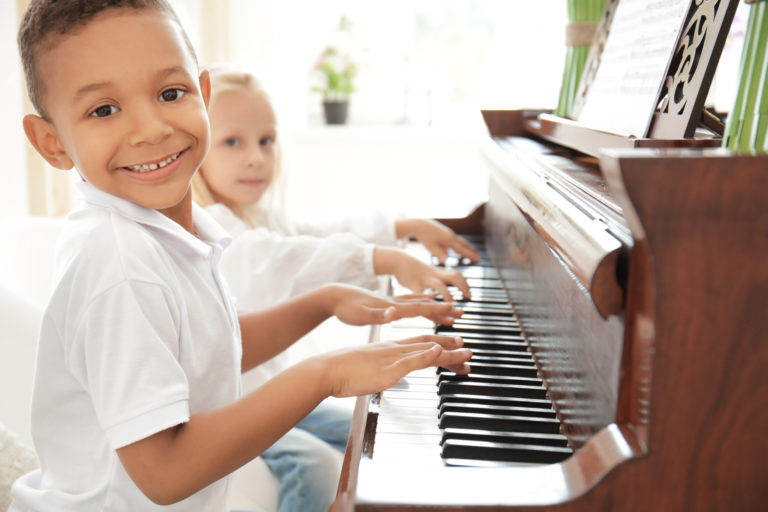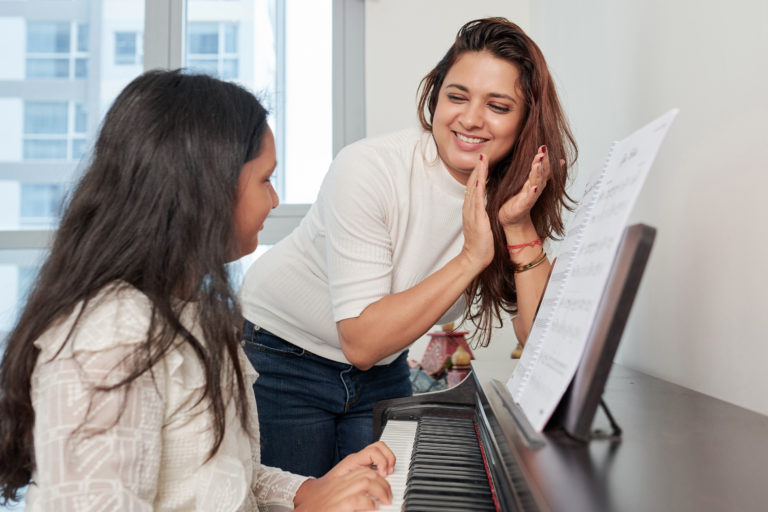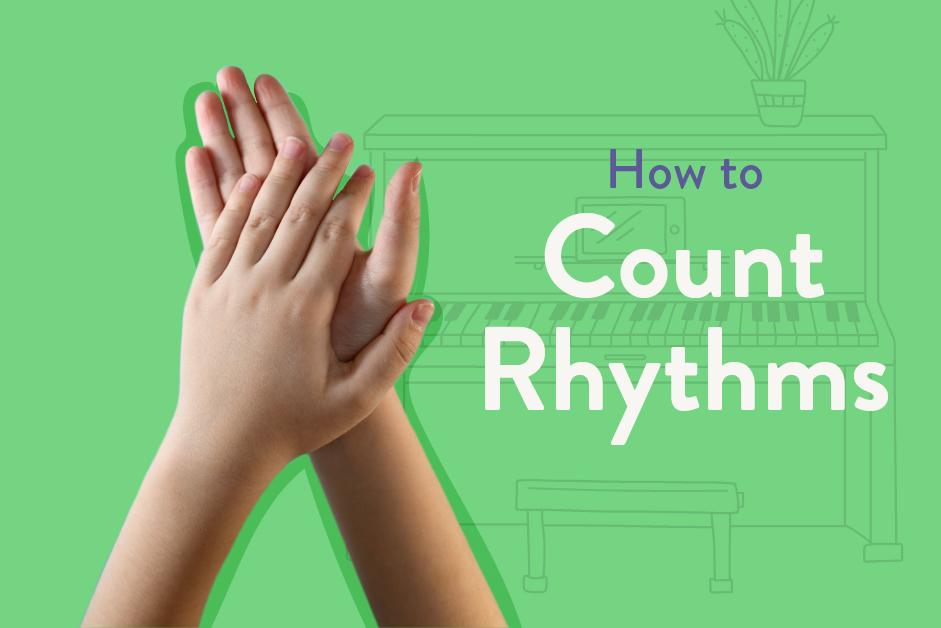Interested in counting rhythms? Learn how to count beats in music with this information
After your child has developed a good sense of beat and is able to recognize rhythm notation and read simple rhythms, at last it’s time to learn to count. I compare this progression to the natural way a child learns their native language. First they hear the language and learn to speak it, then they learn to read, and only then do we start teaching them the details of grammar and spelling. Most kids don’t like having to count out loud as they play a song. If you learned the piano as a child, trying to count out loud while playing might be one of your most frustrating memories. So why is it so hard, and why do piano teachers insist that kids do it? Let’s talk first about the benefits of learning to count rhythms, and then we’ll attack the difficulty of counting rhythms and find ways to make it more easy and maybe even fun.
Counting Makes It Correct
Counting out loud is really helpful. It’s like a ruler that keeps the rhythm precise and measured. If you don’t count your rhythm it can be like trying to build a house without measuring anything. If you’re building a house and just cut the wood the way you think it should go without using a ruler, how is your house going to turn out? It’s the same with a piece of music. When you count out loud as you play, the tendency to rush through rests or longer notes goes away. Counting is also a good way to practice a rhythm slowly, then increase in speed without losing the pattern. Yes, counting is hard. That’s good! I like giving students a challenge. I don’t ask my students to count out loud so it will be easy. I ask them to count out loud so it will be correct.
Subscribe for updates, content & free resources!
Learning How to Count Rhythms is a Valuable Tool
One of the reasons that counting out loud is so painful for students is that music teachers tend to use it only as a last resort. If the student is playing the rhythm incorrectly, the teacher says, “count out loud!” as if it’s a punishment for not being able to figure out the rhythm. If you’re only being asked to count a rhythm that’s giving you a hard time, how are you ever going to feel comfortable with counting rhythms? Instead, I suggest allowing children to learn to count out loud with rhythms that are simple, rhythms they have already mastered on a primal and visual level. Then counting out loud becomes a familiar tool they can use whenever they need it. Introduce counting with very basic rhythms. Have children count out loud while they play songs they have mastered. That way when they get to more advanced rhythms, counting out loud doesn’t feel so overwhelming. If you need a review on how to count rhythms so you can help your child, here’s an article from musicnotes.com that will get you started.
Piano lessons that fit your schedule. Create a free account now.
Rhythm Counting Practice & Activities
Besides counting out loud as your child plays a familiar song, here are some other activities to help your child develop their counting skills:
- Fill in the blank: Choose a time signature. Use rhythm cards like the ones from our complete lesson materials and fill in part of a measure. Have your child choose rhythm cards that will complete the measure. For example, if you choose 3/4 time, you need three quarter notes or the equivalent to fill a measure. If you put down a half note (2 beats), your child could chose a quarter note (1 beat), or two eighth notes (also 1 beat), or the same count of rests (so long as it equals 1 beat).
- Rhythm Balance: Choose a long note, like a half (2 beats), dotted half (3 beats), or whole (4 beats), and have your child come up with different ways to use shorter notes to fill the same number of beats.
- Counting Challenge: Provide a steady beat by clapping or using a metronome while your child claps and counts a rhythm. For a super challenge, have your child play a song on the piano and count the rhythm while listening to a steady beat. Be sure to start with a simple song your child can play well.
- Conducting Challenge: Teach your child basic conducting patterns. For 4/4 time, move your hand down (beat 1), across your body (beat 2), out (beat 3), then up (beat 4). For 3/4 time, move your hand down (beat 1), out (beat 2), and up (beat 3). Have your child try to count out loud while doing the motions. Then try chanting or counting a rhythm while conducting. This is a tricky skill, so make it fun and be ready to laugh together if either of you get a little mixed up.
Build Counting on Top of a Strong Foundation
Remember that learning how to count music beats and counting rhythms represents the most advanced stage of rhythmic understanding. It should be built on a strong foundation of a child’s sense of beat and familiarity with rhythm notation. Introduce counting only when a child is ready for it, and then practice counting skills with many rhythms that the child has already mastered, so that counting rhythms can become a valued skill for your child to use in exploring more complex and advanced rhythmic patterns as they progress in their music studies.




